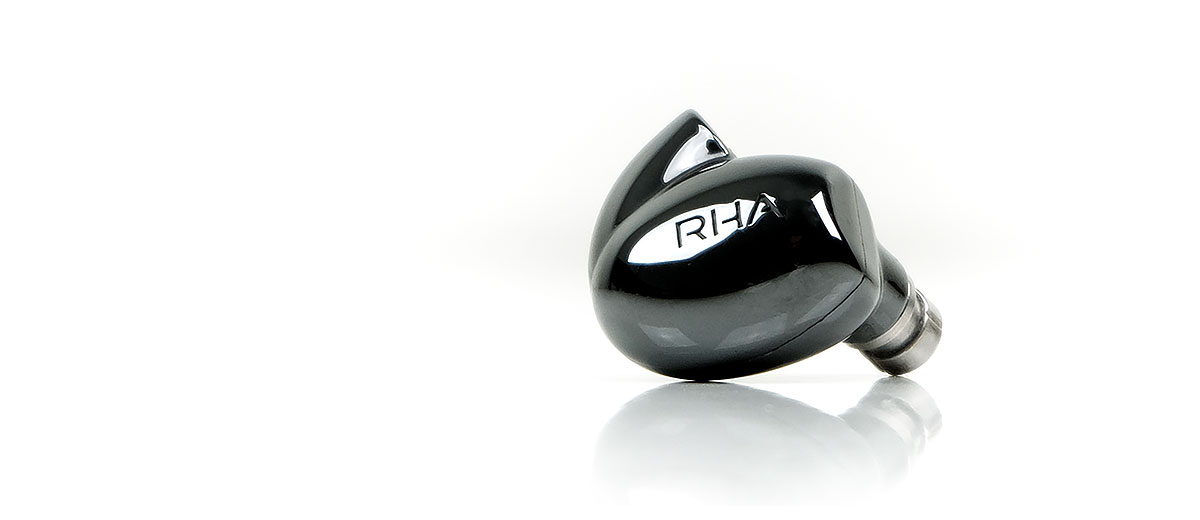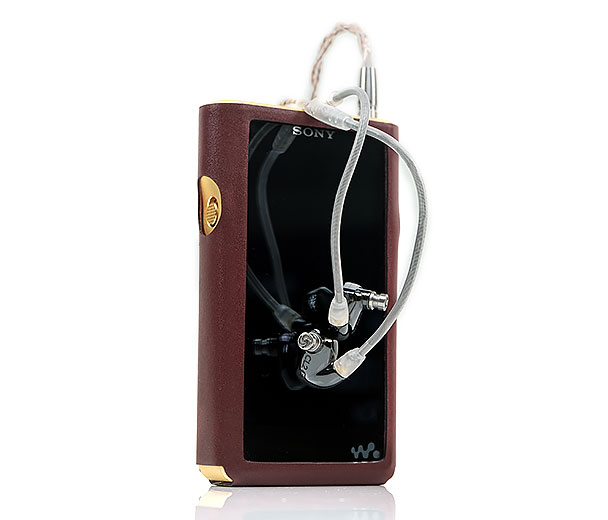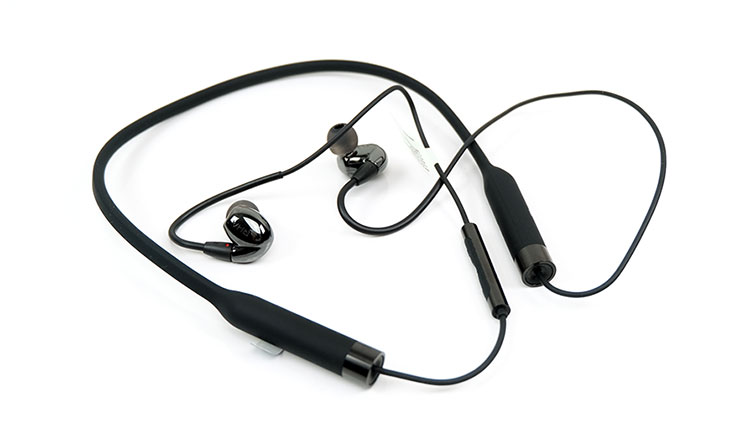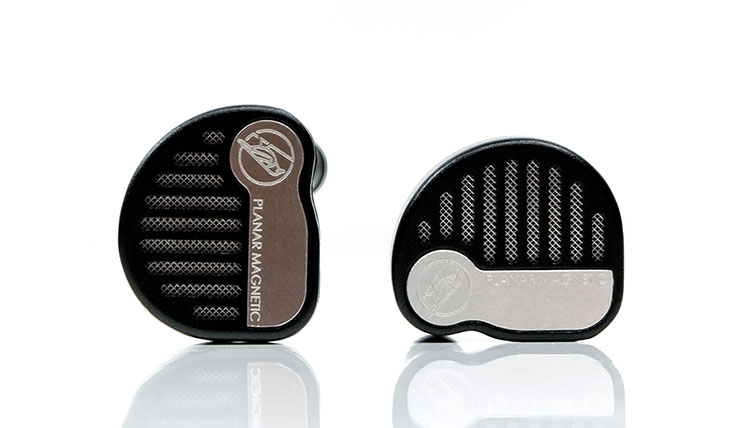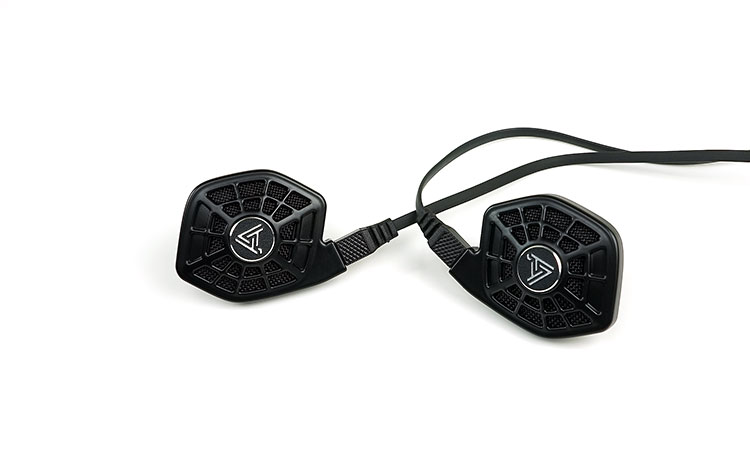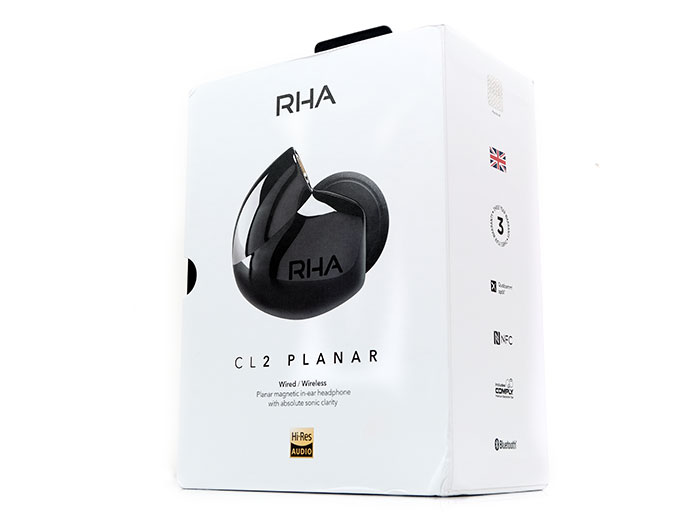Sound Impressions
Summary
The CL2 has a slightly unusual tuning but given that it is a closed-back planar design some of the emphasis in the lower half of the FR is not so surprising. At a high-level I find the CL2 to be perfectly suited and excelling at modern dance, house, and downtempo electronic music. Here it finds it’s ‘nirvana’, well my nirvana anyhow There are a few reasons for that conclusion.
Presentation
The first is the sub-bass emphasis with a slow but linear drop into the lower-mids. Generally speaking, closed-back designs will offer a shade more bass emphasis and slightly more forward one at that, not always, but as a general rule. The CL2 is no different in that regard and certainly, compared to open back planar designs such as the iSINE 10 and UM’s older ME.1 you will hear a bit more sub-bass heft and mid-bass warmth.
Beyond that, the CL2 drops a fair bit into the lower-mids and stays relatively recessed until about the 1K marker. The low-end and mid-bass warmth prevents the lower-mids timbre from sounding thin but they lack a little presence with the sub-bass and upper mids dominating the presentation.
Treble is not overly emphasized though, especially with the foam tips. S, whilst the overall timbre of the RHA CL2 from 1k onwards is relatively clean its not too sharp or brittle sounding to my ear.
And that is the crux of how the CL2 comes across. There is fairly emphasized 1-4k rise which is accentuated with a lower-mids dip and beyond that a steady fade with a small bump around 8-10k. Anything that resonates or strikes a tone or pitches around 20-100Hz and 1-4k is front and center on the CL2 with everything else tucking in behind. That could be vocals, some percussion passages, kick drums and synth bass, depending largely on the track.
Preferences
It is not just a single track that is suited to the CL2 tuning but whole genres seem to excel wonderfully whilst others, well not at all really. Thus, I would shy away from calling this a generalist tuning. It is somewhat niche and bucks some previously accepted notions of how a planar magnetic driver could or should be tuned.
What works? EDM, modern R’n’B and soul (in part) and anything that doesn’t call upon complex instrumental passages that require ultimate presence and separation. Bands like the Chainsmokers, downtempo specialist singers such as Samantha James and one of my old synth-wave classic favs, Gary Numan. All sound great because the complexity or focus of the tracks did not trip up the FR of the CL2.
Once you start getting all “midrangy’ with the likes of Talk Talk, The Struts and The Lemon Twigs and I found myself ‘wanting’ for a bit more richness, more evenness and instrumental presence from 500Hz to 1k.
Staging
You get some excellent depth on the CL2, no doubt about that. It is a closed headphone so it is not an expansive or super airy soundstage but it doesn’t lack in power and more than neutral of neutral sub 100Hz.
The dip in the lower-mids pulls back instruments as does the fade from 4k onwards. It is not dark though, there is a small boost from 8-10k but again, it is really that 1-4k boost that pushes everything front and center and can lead to percussion and some higher pitching vocals dominating the stage.
Lower pitching vocals can lose a little presence also, especially if pitching the same as surrounding instruments. They tend to sound a little diffuse and lacking in separation. If you need strong guitar work to resonate and step forward in staging presence the CL2 is not working to its strengths.
Stripped-down mixes such as dark synth’s Moon’s Quixotic or lighter sounds with strong female vocals such as Paloma Faith sound excellent, however. Sometimes you want intimate, sometimes you want a ballsier low-end bass fundamental and here the CL2 staging works much better.
Matchability
Efficiency
The RHA CL2 is rated at 15Ω and 89dB SPL. Do not panic. This is not the older CL1 with its super-high impedance and does not require an external portable amp to drive it. It is much easier to drive than you think but inefficient enough to make you want to revert to the silver balanced cable to take advantage of any DAPs more powerful balanced output.
Weaker sources will have no issues driving the CL2 in all honesty. DAPs such as the R3 still need plenty of volume due to that 89dB SPL rating pushing it to almost 70 steps using its unbalanced output. However, it does sound just fine with more than enough headroom. RHA did the wise thing dropping the CL2 impedance levels down to 15Ω to make it fairly accessible.
Wireless
Nothing surprising about the wireless performance with a small drop in dynamic range, slightly more bass bloom and yes, just a slightly harder upper-mids edge to the harmonic balance. I would have loved if the cable was LDAC compatible to get that dynamic range closer to wired standards because for me aptX always seems to have this loose bass on almost everything I try.
Much depends of course on the internal amp in the cable. Whilst I am fine with it, the wired does deliver more detail and a better harmonic balance when we tested with the BT from the Lotoo PAW Gold Touch. That low-end also tightens up considerably going wired but no surprises there.
Synergy
I like power with the CL2 and whilst it does not necessarily need it to get to a decent performance level it can scale really well with quality output signals. The more resolving and the better the dynamic range the better the CL2 sounds.
For example, the Cayin N6ii with the A01 motherboard was an excellent compromise between a natural sounding timbre and good power. The CL2 combined with the foam tips and much of the genre matching I had spoken about sounded excellent. The Lotoo PAW Gold Touch lacked a little forgiveness in the upper mids and treble to really gel with my tastes but the dynamic range was probably the best of the DAPs I had tested with it.
The new midrange Dethonray DTr1 we are currently testing in the office right now was perhaps the best match (wired only) with the CL2 with either the warmer copper or smooth but neutral-sounding silver 2.5mm alternative. It has bags of power and a beautifully natural sound that takes any potential edge out of the CL2 timbre, especially for percussion notes which is are nice and wet with excellent body. Best of all it costs a lot less than either the Cayin N6ii and the LPGT.
Select Comparisons
AAW Nightingale
SG$1399
Technical
Perhaps more than any recent release the CL2 comes closest to the Nightingale as a competitor on paper. The price point is just marginally lower than the Nightingale as well and inside you do get an additional cable (balanced silver) and a wireless aptX capable alternative with the CL2.
Inside, the size of the two planar IEM drivers are not that different either. The CL2 uses a planar coil and 16-micrometer diaphragm suspended above two matched magnetic fields. Literally the diaphragm is suspended in mid-air. The Nightingale is just marginally smaller with that 15mm MPMTM micro planar magnetic driver but uses a PVD deposited voice coil planar diaphragm.
The big design difference, however, is that the CL2 is a closed-back planar design and the Nightingale is an open-back. This will change the tonal characteristic somewhat but also means the CL2 will isolate much better.
The CL2 also uses an MMCX system compared to the 0.78mm 2-pin of the Nightingale. I find the MMCX of the CL2 a little more awkward to use due to the short stem and smooth housing making it a difficult grip when connecting.
Performance
The Nightingale is rated at 26Ω and 105dB compared to the 15Ω and 89dB SPL of the CL2. The Cl2 on paper is much less efficient. Despite that, a side by side testing of the Nightingale and the CL2 did not reveal any massive volume difference using high gain on the Cayin N6ii which surprised me.
The same pattern pretty much played itself out on the FiiO M11 and the Lotoo PAW Gold Touch so perhaps a little bit of the lower impedance value and the better isolation of the CL2 is a factor here. Noise on both is non-existent with all DAPs tested nor would you expect to find any with two monitors rated at 89dB and 105dB SPL.
Tuning
The CL2 is much more u-shaped and elevated on the sub-bass and upper mids compared to the Nightingale. It has a bit more treble/bass contrast also with a small peak around 8-10k. From 20-100Hz there is more punch and power in the CL2 tuning but it drops quite rapidly into the lower mids so it is a little cooler in its timbre and not as rich and warm as the mid-bass to lower-mids of the Nightingale.
Personally, I find the CL2 lower-mids a little recessed and lacking in separation for rock standards and anything requiring a lower-mids instrumental clarity. The Nightingale has a better instrumental presence and texture but can smear a little and not quite as precise as a solid tuned balanced armature or dynamic driver response.
I would pick the Nightingale for rock standards over the CL2 for its richer timbre and better ‘Les Paul’ sleaze rock overtones in its lower mids. The CL2 seems to mate much better with modern EDM/R’n’B or pop with female vocals which sit more in that big upper mids rise past 1k. The less work it has to do from 500Hz to 1k the better it sounds. If you are a Billie Eilish or Chainsmokers fan the CL2 is a lot of fun and more fitting of that classic closed-back punchy sound and intimate vocal tuning.
Treble on both is on the relaxed side but I find the Nightingale a bit more balanced whereas the CL2 forward upper mids tend to dominate a lot more and sounds less even or coherent. That little 8-10k peak does help to prevent the CL2 from sounding dark but it is very underplayed for me.
Unique Melody ME.1
$769
Technical
The ME1. is a bit long in the tooth having been released in 2017 and the price since then has dropped a little to around $600. I am not even sure UM is making it anymore but I have seen a few for sale recently.
This was the first real in-ear planar design for me with the additional bonus of a quasi-pressure relief system, (acoustic filtering) to protect your hearing. The ME1. uses a marginally larger 18mm dual-layer high strength neodymium magnet driver tucked inside an open back designed 3D printed medical-grade acrylic mold. This is a larger monitor compared to the CL2 by some distance and an open back design.
The ME1. uses a bit more of a custom universal design than the CL2 but given the diminutive size of the RHA design, the comfort levels are not that much different. The ME.1 needs the enhanced contouring to allow the larger size to fit comfortably whereas the CL’s smaller form factor slots right in and looks very flush to the ear. Tips play a bigger role in how secure the CL2 will also be in your ear.
The ME.1 uses a 0.78mm 2-pin protruding stem connection system compared to the RHA Cl2’s sunken MMCX system. I am not a huge fan of either, to be honest. I find the CL2 to be fiddly to get it to lock due to the lack of grip on the body and the ME.1’s protruding stem to be weak for aftermarket cable attachments.
Performance
The ME.1 is rated at 23.1 ohms and 109dB compared to the CL2’s 15Ω and 89dB SPL. And yes, there is a fair old gap between these two in terms of efficiency despite the ME.1 impedance being slightly higher.
It is really more the SPL gap that is more noticeable with about 10 to 15 steps at least on the Lotoo PAW Gold Touch unbalanced as our testing source. Like the iSINE 10, the ME.1 is more sensitive to increases in volume levels whereas the RHA CL2 can suck up a lot more current. Noise is not an issue on these two monitors with a quiet background on all DAPs tested, neither are terribly sensitive for that matter.
Tuning
The ME.1 is almost what happens if you turn the FR of the CL2 upside down. It has a slightly rolled-off sub-bass response compared to the boosted CL2 low-end, a rising mid-bass to lower mids compared to the dipped and diffuse lower-mids of the CL2. Critically, the ME.1 is recessed from 2-4k whereas the CL2 has its major bump here. Neither has too much treble emphasis beyond 6-7k though the CL2 does seem to bump a bit better at 8-10k.
As a result, the ME.1 sounds the slightly darker of the two, the slightly smoother also. The CL2 has a much more forwards higher pitching vocal emphasis and a bit more rumble but perception-wise, the ME. 1 has the larger sound stage. Two reasons for that. The first is the open back design does allow the ME.1 to breathe a little easier for me and second, that dip in the mids creates a perception that they are further back.
The CL2 forward mids stretches the staging from front to back but that lower- mids dip takes a little bit of clarity and separation out of the mix for me. Much like the Nightingale comparison, if you are listening to a bit of EDM or a track that has little lower-mids instrumental passages with a degree of complexity the CL2 excels. Throw in a lot of guitar work and its not as clear sounding.
The ME.1 lower-mids are much warmer with that rise and have a bit more presence. But like a mirror anything above 2K sounds “behind” the lower-mids and a touch recessed. Vocal lovers may struggle a bit with that tuning.
Audeze iSINE 10
$399
Technical
Two incredibly different propositions here. First, the CL2 is small, metal and closed with a more traditional monitor design. The iSINE 10 is big, plastic and sits mostly outside the ear. It looks nothing like a traditional monitor and is very open in its design.
Second, the iSINE 10 uses a much bigger full-range 30mm planar driver with Fluxor magnet technology and a patented Uniforce voice-coil. This is compared to the RHA CL2’s planar coil and 16-micrometer diaphragm with suspension technology.
The CL2 is the comfier of the two in the ear by far and isolates much better given its nug fit and closed-back design. The iSINE 10’s open-back design will deliver a very tuning but not one for the commute. Interestingly, both do have a focus on cable technology with the DSP and amping on the Cipher cable of the iSINE 10 for iOS devices and the additional balanced and BT cable inside the RHA CL2 box.
Performance
The iSINE 10 is rated at 16Ω and 120dB SPL compared to the RHA’s 15Ω and 89dB SPL. You would think that the CL2 base volume level would be much higher but it is not.
The gap in real-life testing, unbalanced on the PAW Gold Touch, was about 7-8 steps, possibly 10 max. However, the bigger gap was in how sensitive each was to volume increase with the CL2 much less sensitive to big jumps than the iSINE 10. I could push the CL2 an additional 10-12 steps before that forward midrange started to sound a bit too loud whereas the iSINE 10 range before getting too loud was much lower.
You will have any issues with noise or background hiss with either of these two planar monitors. DAPs such as the Cayin N6ii and FiiO’s M11 sound dead quiet with nice black backgrounds.
Tuning
The iSINE 10 follows a fairly typical Audeze tuning with a flattish but punchy low-end and a gentle but linear rise through the lower-mids and peaking at 1-2k. From there it is that normal Audeze dip from 2-4k and then a final few peaks at 6-8k.
The CL2 has a more pronounced low-end elevation up to around 200-300Hz, fairly normal for a closed-back design. Rather than rising into the mids, it drops and it is at its lowest point almost where the iSINE 10 is at its most forward sounding. I would say about 1k is where the CL2 is recessed the most and anything that falls into there will lack presence whereas the iSINE 10 will amplify it and place it front and central.
The iSINE 10 definitely sounds the more open of the two with better width in the mids and that will suit those who like a bit more presence to their instruments such as rhythm and bass guitar.
2-4k is where the CL2 is front and center and the iSINE 10 is dipped, though not by quite the same level of dip. That being said the iSINE 10 treble peak has a degree of hardness to it that the CL2 does not have. The sibilance and edgy treble are more prevalent on the iSINE 10 than I would like, at least with the stock cable.
The CL2 may not have the same level of treble extension or sparkle but that’s a wise move given how much amplitude is in those upper mids. As a result, the CL2 doesn’t have the same hardness or sibilance as the iSINE 10 in its timbre.
Our Verdict
The RHA CL2 is an ambitious monitor with some excellent tech, beautiful design and possibly one of the most joyful unboxing experiences you will find south of a grand. It looks the business and can probably take the ‘Chord tank crush’ test and come out smiling without a scratch on it.
The tuning will appeal to the modern audiophile who enjoys stripped-down instrumental mixes. It feels perfect for that modern R’n’B dance fusion with a stronger vocal and bass focus and plenty of black background behind. Less so for classic rock, jangling indie rock and lower-pitching male vocals. It is not your usual planar tuning if you are thinking Audeze or even AAW’s new Nightingale. Less warmth, more power, and a strong upper mids focus.
The addition of Bluetooth via a detachable cable is distinctive if not my preferred mode of connection. There are very few if any, alternative planar IEM’s out there capable of offering ‘wireless’ out of the box and will certainly appeal to casual audiophiles who may never have tried a planar IEM before.
RHA CL2 Specifications
- Weight: 9g (without cables)
- Impedance: 15 ohms
- Max/rated power: 2 / 10mW
- Sensitivity: 89dB/mW
- Frequency range: 16 Hz – 45,000 Hz
- Manufacturer’s Warranty: 3 years

